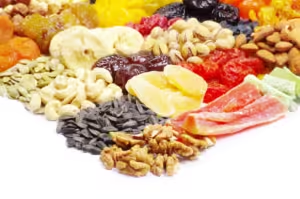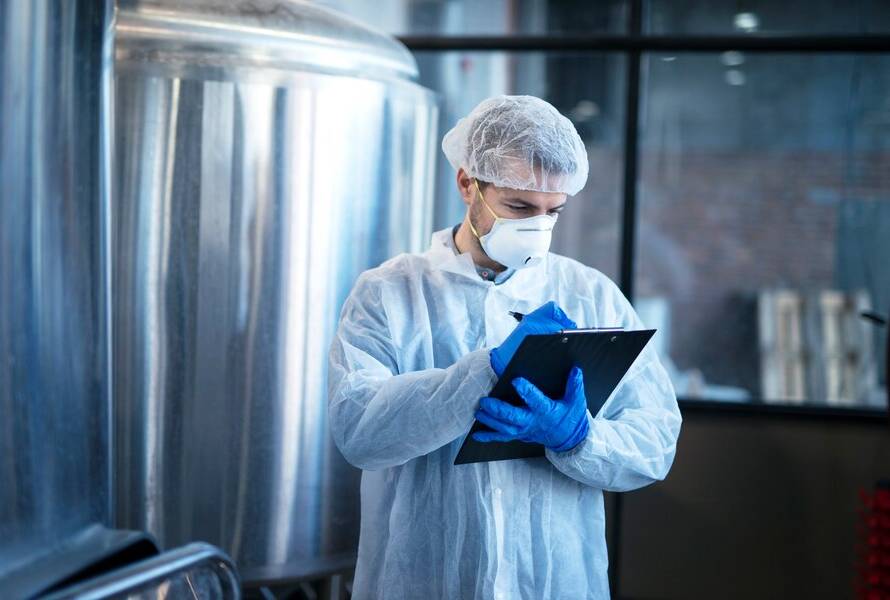
Dry food pasteurization is a thermal process that aims to kill or reduce the number of bacteria, germs, and other microbes that may be present in dry food. This process helps improve the shelf life of the product and reduce the risk of foodborne illness.
In this article, we will discuss all aspects of dry food pasteurization, including its methods, benefits, and examples of dry food that are pasteurized.
What is dry food pasteurization?
Dry food pasteurization is a thermal process during which food is heated to a specific temperature for a specific period of time in order to kill or weaken microorganisms such as bacteria and fungi. This process is mainly applied to dry foods that may be susceptible to contamination during the production or storage stages. The goal of pasteurization is to preserve dry foods for a longer period without losing their taste or nutritional value.
Why is dry food pasteurized?
Dry food pasteurization helps in:
1-Enhancing food safety: eliminating harmful germs.
2-Increasing shelf life: by reducing biological contamination.
3-Preserving nutritional values: reducing the loss of vitamins and minerals during processing.
Types of dry foods that can be pasteurized
1- Dry grains
Grains such as rice, wheat, and barley are among the most dry foods that are subject to pasteurization. These grains are exposed to high temperatures to get rid of any microbes or parasites that may affect their quality.
2- Legumes
Dry legumes such as beans, lentils, and chickpeas are also pasteurized to ensure that there are no pathogens such as salmonella or E. coli.
3- Nuts
Nuts such as almonds, walnuts, and pistachios may be pasteurized to ensure that they are free of microorganisms that may cause food contamination.
4- Dried products
Dried products such as dried fruits and dried vegetables are sometimes pasteurized to ensure that they are free of any harmful bacteria that may affect the health of the consumer.
Dry Food Pasteurization Methods
1- Dry Heat Pasteurization
This method relies on heating the dry food material using hot air. This method is usually used in processing nuts and grains.
2- Steam Pasteurization
This method relies on passing steam through dry food materials at high temperatures to kill bacteria and microbes without significantly affecting the nutritional value of the product.
3- Sterilization Pasteurization
In this method, dry food is exposed to very high temperatures for short periods. It is an effective method for killing germs on a large scale, and is used in some foods such as canned grains.
Benefits of Dry Food Pasteurization
1- Extending the shelf life of products
The process of pasteurizing dry food contributes to extending the shelf life of these products, as they become less susceptible to spoilage and contamination during storage.
2- Improving the quality of products
Pasteurization helps maintain the quality of dry food materials in terms of taste, color, and texture, making them more attractive to the consumer.
3- Improving food safety
By eliminating harmful microorganisms, pasteurization can reduce the risk of food poisoning and foodborne illness.
How to choose the appropriate pasteurization method for dry foods
When applying dry food pasteurization, the appropriate method must be chosen based on the type and characteristics of the product. Pasteurization techniques differ in terms of their impact on the nutritional properties and shelf life of food. For example, if the product has a low moisture content, such as dried grains, it may be better to use dry heat pasteurization. While if the product has a higher moisture content, such as dried legumes, steam pasteurization is more effective in eliminating microorganisms.
The role of technology in improving the dry food pasteurization process
Technology continues to improve dry food pasteurization processes, increasing their effectiveness and efficiency. Recent innovations such as microwave or infrared pasteurization contribute to improving temperature control and reducing the effect of heat on food properties. The use of automatic temperature and humidity measurement systems also allows for accurate results and energy savings. These modern technologies help companies reduce costs and increase productivity.
The effect of pasteurization on the taste and nutritional value of dry foods
Although the process of pasteurization of dry foods aims to enhance food safety, heat may slightly affect the flavor of some products. While some foods such as grains are not significantly affected, the flavor of nuts or dried fruits may change slightly after the pasteurization process. However, this effect can be minimized by using advanced pasteurization techniques that maintain the original flavor. On the other hand, pasteurization helps preserve most of the nutritional values such as proteins and minerals, but some sensitive vitamins such as vitamin C may be lost.
The relationship between dry food pasteurization and packaging technology
Dry food pasteurization is part of the production chain that also requires the use of advanced packaging technologies. After the pasteurization process, food is packed in airtight containers to prevent the entry of microbes or oxygen that may lead to spoilage. Packaging specially designed to resist external influences is an essential part of ensuring the safety of the product after pasteurization. This method helps ensure that the quality of the product is maintained for as long as possible after the pasteurization process.
Environmental Benefits of Dry Food Pasteurization
Although the process of dry food pasteurization requires energy, it contributes to reducing food waste by increasing the shelf life of products. This helps reduce food waste and is an important step towards promoting sustainable food production. Pasteurization also reduces the need for chemical preservatives that may be harmful to the environment, making it a more environmentally friendly option.
The Importance of Pasteurization in Global Markets
Global markets are witnessing an increasing demand for dry food pasteurization, especially in markets such as Europe and the United States, where consumers attach great importance to food safety. Pasteurization is a key tool in achieving food safety standards imposed by health authorities in various countries. By adopting advanced pasteurization technologies, producers can meet these standards and protect consumers from the risks associated with contaminated food.
How to Improve Dry Food Pasteurization Processes in Companies
Companies operating in the dry food industry can improve their dry food pasteurization processes by adopting innovative and effective solutions. For example, resources can be invested in improving heating systems and precisely controlling temperatures to increase the effectiveness of pasteurization. Training workers on the use of modern pasteurization techniques and continuously monitoring the results of the process helps improve performance and reduce costs. It is also important to follow innovations in pasteurization technology and look for new solutions to maintain product quality and expand markets.
Future challenges for dry food pasteurization
Despite the many benefits of dry food pasteurization, there are some challenges that companies may face in the future. Among these challenges is the global trend towards reducing energy consumption, as pasteurization processes can consume a lot of energy. With increasing pressure to adopt more sustainable practices, producers may need to invest in less energy-intensive technologies to improve the pasteurization process. The expansion of the use of microwave or infrared pasteurization technologies may also open new horizons for this field.
In conclusion, dry food pasteurization is an essential process in the food industry, contributing to ensuring the quality and safety of these products in the long term. If you are interested in implementing this process or would like to receive specialized advice on improving pasteurization processes in the dry food industry, ProNano Food Industry Consulting provides comprehensive consulting services that can help you make the right decisions to ensure the quality and safety of your products. Do not hesitate to contact ProNano Food Industry Consulting for professional advice and support.
Contact ProNano Food Industry Consulting now to receive specialized advice on dry food pasteurization and improve your food operations.
Read more about food market trends in 2025



